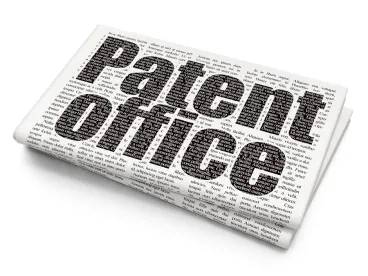Takeaway: If a petitioner challenges claims in a proceeding in which a final written decision is issued, it may be estopped from challenging those claims in another proceeding on different grounds if the evidence shows that the petitioner knew about those grounds when it filed the earlier proceeding.
In its Final Written Decision, the Board held that claims 1, 7, and 10 of the ’347 Patent are unpatentable, that Petitioner had not met its burden of proving unpatentability with respect to claim 24, and that Petitioner is estopped from maintaining its challenges to claims 21 and 23. The ’347 Patent describes a hybrid vehicle with an internal combustion engine, at least one electric motor, and a battery bank, all controlled by a microprocessor that controls the direction of torque between the engine, motor, and drive wheels of the vehicle.
The Board began by discussing claim construction, stating that claim terms are given their broadest reasonable construction in light of the specification. The Board first reviewed the term “road load” or “RL,” adopting a modified version of the parties’ agreed-upon construction. The Board then reviewed the term “setpoint” or “SP,” adopting Petitioner’s construction. Finally, the Board reviewed the term “monitor patterns of vehicle operation over time,” adopting Patent Owner’s construction.
The Board then discussed estoppel of claims 21 and 23. The Board found that Petitioner is estopped from challenging those claims because the asserted grounds are based on prior art that Petitioner was aware of, and could have raised, in prior proceedings challenging the same claims. Specifically, the Board noted that claims 21 and 23 were the subject of other inter partes review proceedings in which final decisions were entered. The Board found that although the prior art challenges to those claims were not raised in the prior proceedings, the record demonstrates that Petitioner knew about the prior art at the time the prior proceedings were filed.
The Board then discussed whether claims 1, 7, and 10 are obvious over Caraceni. Patent Owner contended that Caraceni fails to teach or suggest starting and operating the engine to propel the vehicle in response to a “setpoint” because it requires a driver to manually select when to operate the engine. The Board disagreed, citing to Petitioner’s expert’s testimony to support the contention that Carceni discloses automatic control. The Board also disagreed with Patent Owner’s argument that Petitioner relies on inherency to prove disclosure of a “setpoint.” Patent Owner also argued that Caraceni’s controller does not “start and operate” the engine to drive the electric motor to charge the battery, however, the Board did not agree. Additionally, Patent Owner argued that Caraceni’s “engine starter” is incapable of accepting current from a “hybrid battery,” but the Board found that Patent Owner was reading limitations into the claims that were not there. Finally, Patent Owner argued that Caraceni does not operate the vehicle in response to “road load,” as required by claim 7, but the Board found otherwise.
Finally, the Board reviewed whether claim 24 is obvious over Tabata ’201 and Tabata ’541. Petitioner acknowledged that Tabata ’201 does not disclose the step of “employing said controller to monitor patterns of vehicle operation over time and vary said setpoint SP accordingly,” but argued that Tabata ’541 does. However, the Board determined that under its construction of “monitoring patterns of vehicle operation over time,” Tabata ’541 did not disclose this limitation.
Ford Motor Company v. Paice LLC & The Abell Foundation, Inc., IPR2014-00884 Paper 38: Final Written Decision
Dated: December 10, 2015
Patent: 7,104,347 B2
Before: Sally C. Medley, Kalyan K. Desphande, and Carl M. DeFranco
Written by: DeFranco
Related Proceedings: IPR2014-00571; IPR2014-00579; Paice, LLC v. Ford Motor Co., No. 1:14-cv-00492 (D. Md.); Paice LLC v. Hyundai Motor Co., No. 1:12-cv-00499 (D. Md.)



 />i
/>i

